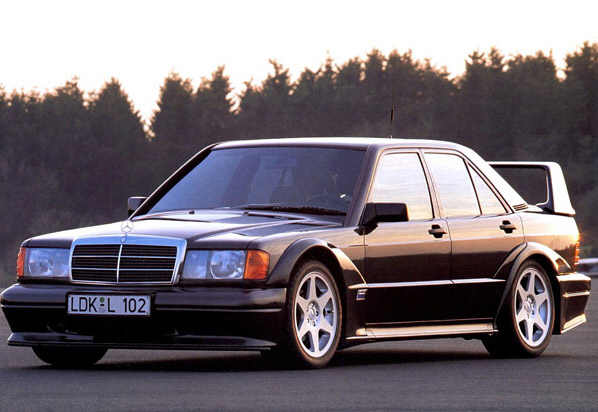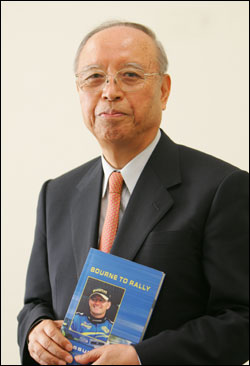1990 Mercedes-Benz 190 E 2.3-16 Evolution II
235 hp, zero to 60 mph in seven seconds
Predecessor to today's STi sedans.

The Mercedes-Benz 190 (201 series) introduced in 1982 rapidly made a
name for itself as the "Baby-Benz". But who would have thought that it
would also acquire a reputation as a compact sports car over the years
and after several engine and equipment refinements? This development
finally culminated in the 190 E 2.5-16 Evolution II which made its
debut at the Geneva Motor Show in March 1990.
A first sports version came onto the market in 1983: in the ECE
version, the engine of the 190 E 2.3-16 developed 185 hp (136 kW) and
accelerated the car from standstill to 100 km/h in 7.5 seconds; the
top speed was 230 km/h. The 190 E 2.5-16 which followed in 1988 with
an advanced 195 hp (143 kW) sixteen-valve engine boasted similar
performance. These were the sort of top-class performance figures
which warranted the car's use in motor sport. As early as 1985, the
190 E 2.3-16 was entered by private teams first in the French
production car championships and from 1987 also in the German Touring
Car Championships (DTM). In 1988, Daimler-Benz became active by
officially supporting teams competing in the DTM. One year later, a
homologation version with type approval for road use, the 190 E 2.5-16
Evolution I, made its debut. Engine output had remained the same but
the running gear had been modified for the sort of racetrack work for
which the EVO I had been designed, forming as it did the basis for a
Group A DTM touring car. Of this model, 502 units were built to obtain
homologation - a precondition for participation in motor sport. This
model was highly successful in numerous races. Demands, however, were
rising and so, the only logical step was to develop an even more
powerful EVO.
Continue reading "Mercedes-Benz 190 E 2.5-16 Evolution II" »

